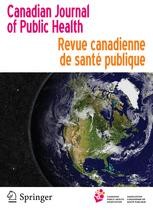Urban Inuit communities suffer from poor health and limited access to healthcare
A study shows that Inuit communities in cities have significantly more health problems than the general Canadian population
Heidelberg | New York, 9 October 2018
 Cases of cancer and hypertension are much higher among Inuit living in and around Ottawa than for the general population of Canada’s capital city. This is according to a study co-led by Janet Smylie of St. Michael’s Hospital and the University of Toronto in Canada and published in the Springer-branded Canadian Journal of Public Health.
Cases of cancer and hypertension are much higher among Inuit living in and around Ottawa than for the general population of Canada’s capital city. This is according to a study co-led by Janet Smylie of St. Michael’s Hospital and the University of Toronto in Canada and published in the Springer-branded Canadian Journal of Public Health.
The study was conducted in partnership with an Inuit-specific service provider called Tungasuvvingat Inuit (TI) that provides social support, cultural activities, counselling and crisis intervention to the Inuit community in Ontario, who led the collection of study data. According to Smylie, some of the findings of the research have already been incorporated into the development of a new culturally appropriate medical care programme for Inuit in Ottawa.
Life expectancy, infant mortality and chronic diseases experienced by Inuit living in northern Canada are often compared to those of low-income countries and contrast starkly with what would be expected from an affluent country. According to a recent survey, 27 per cent of Inuit in Canada now live outside of the traditional Inuit Nunangat (traditional homelands), and two in every five reside in large urban centres.
Information was gathered from 341 Inuit adults in Ottawa about their monthly incomes, health concerns, education, access to food and how they experienced the healthcare options available to them.
The researchers found that the Inuit population in Ottawa is actually four times larger than estimated by the organisation Statistics Canada, and 40 per cent of Inuit adults are under the age of 35. Also, the study showed that Ottawa is an established and long-term permanent place of residence to 56 per cent of the study participants.
Working together with TI, Smylie and her colleagues also found that many Inuit living in Ottawa were living in poverty, with 69.3 per cent reporting that they earned less than 20 000 Canadian dollars per year. More than half (53.9 per cent) did not have any official income. Lack of financial resources went hand in hand with crowded living conditions (20 per cent of those surveyed lived in crowded accommodation) and not having enough food to eat (55 per cent). The situation was slightly better for Inuit who were official permanent residents of the city.
One in every four respondents to the survey reported suffering from hypertension, while 6.8 per cent had cancer and 6.7 per cent suffered from chronic bronchitis. Allergies were also rife. The occurrence of these diseases was found to be much higher among Inuit compared to the Canadian average.
Two in every five (43 per cent) respondents struggled to access relevant health services. Smylie says this might be one of the reasons why Inuit so often seek emergency care, rather than being hospitalized and treated for specific conditions.
“The disproportionate burden of chronic disease is particularly disconcerting given that Ottawa’s Inuit population is much younger than the city’s general population and the likelihood of underdiagnosis given the access to care issues that existed at the time of our study,” explains Smylie.
While some of the numbers are deficit-based, the research highlights the importance of partnerships between minority service providers and mainstream organisations, specifically concerning effective communication. In the case of this community, retention of the Inuktitut language is strong; of the urban Inuit community, 24 per cent speak Inuktitut only and 34 per cent are bilingual in Inuktitut and English.
Jason LeBlanc, Executive Director of Tungasuvvingat Inuit, said: “This study was particularly successful because the Inuit communities and social networks are strong within an urban setting. Using the Respondent Driven Sampling method helped engage traditionally hard to identify populations and this worked particularly well here. Overall, the success of this research is thanks to a respectful partnership between the research team and Tungasuvvingat Inuit.”
Reference: Smylie, J. et al (2018). Our health counts: population-based measures of urban Inuit health determinants, health status, and health care access, Canadian Journal of Public Health DOI: 10.17269/s41997-018-0111-0
Further Information
The Canadian Journal of Public Health is the official journal of the Canadian Public Health Association.
Services for Journalists
The full-text article is available to journalists on request.
Contact
Erica Lorenzoni | Springer Nature | Communications
tel +49 6221 487 8414 | erica.lorenzoni@springer.com
